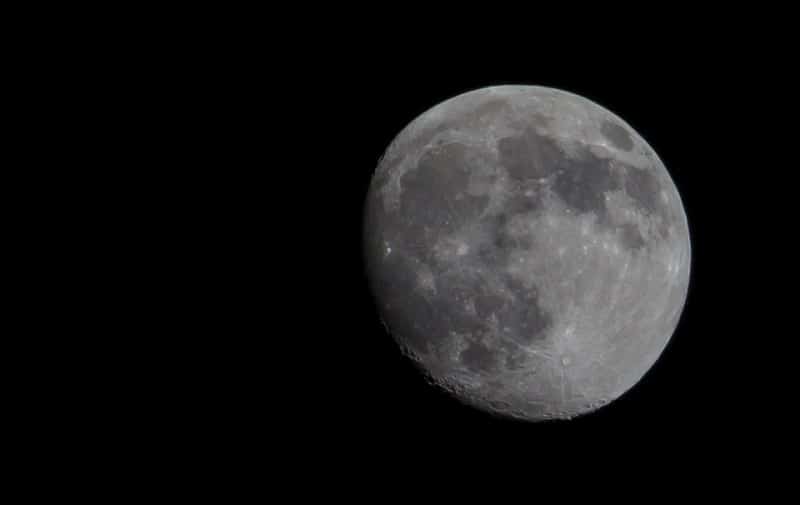This article by Alex Hollings was originally published by SOFREP
In 1958, the United States Air Force launched Project A119, also known as “A Study of Lunar Research Flights.” While the US would not visit the moon with a manned mission for eleven more years, this project involved sending something quite different to the lunar surface: a nuclear missile.
As the United States and the Soviet Union competed for military supremacy, space became one of the most contested venues for new technology. Just one year prior, the Soviet Union had claimed the first victory in this thinly veiled pursuit of the ultimate high ground when they successfully orbited Sputnik 1. The United States responded by redoubling their efforts, allowing the Air Force and the newly founded civilian space agency, NASA, to pursue different possibilities for this new frontier. NASA began work on the Gemini missions, which would make history and lead to the Apollo missions that landed us on the moon. Some in the Air Force, however, decided to go a less ambiguous path in their pursuit of demonstrating the ties between American technology and its military might. Their plan was not only to detonate a nuclear bomb on the surface of the moon, but to detonate one that was big enough to be seen from Earth.
“People were worried very much by (first human in space Soviet cosmonaut Yuri) Gagarin and Sputnik and the very great accomplishments of the Soviet Union in those days, and in comparison, the United States was feared to be looking puny. So this was a concept to sort of reassure people who the United States could maintain a mutually assured deterrence, and therefore avoid any huge conflagration on the Earth,” physicist Leonard Reiffel, who led the project, told CNN in a 2012 interview.
At the time, Reiffel wrote in his report about the project that, “The motivation for such a detonation is clearly threefold: scientific, military and political.”
According to Reiffel, the plan was fairly straight forward. A nuclear intercontinental ballistic missile (ICBM) was to be launched from an undisclosed location with a warhead that was said to be comparable to “Little Boy,” the bomb dropped on Hiroshima in 1945. It would then travel two hundred and forty thousand miles to the surface of the moon, where it would detonate on impact. American scientists would then study a range of important topics such as the makeup of the moon and how nuclear weapons fare in the vacuum of space. The flash of light caused by the nuclear weapon was theorized to be big enough to be seen with the naked eye all over the globe, particularly in the Soviet Union, where the detonation could be seen as a clear show of force.

While some reports surfaced when this project was first declassified that suggested the intention was to “blow up the moon,” the reality would have been far less dramatic. Although the moon is smaller than the Earth, the explosion would still have been rather tiny compared to the celestial mass.
Although the project never got off the ground, it did begin some promising careers. One young graduate student that worked on the project would go on to change the way much of the public saw space in the decades to come; Carl Sagan. Sagan would become one of the world’s leading astronomers, publishing a number of books, hosting the original TV series, “The Cosmos” and even teaching some of today’s greatest pop-science minds like Neil DeGrasse Tyson and Bill Nye, who is not only known as “the Science Guy” but also currently serves as the CEO of the Planetary Society.
By 1959, the project was drawing more ire from politicians than excitement. Fear about a public backlash, the dangers of the weapon detonating while still inside the Earth’s atmosphere, and scientific concerns about the effect the weapon would have on the moon all led to the project being abandoned.
“We didn’t want to clutter up the natural radioactivities of the moon with additional bits of radioactivity from the Earth,” Reiffel said. “It disappeared in the files of the Pentagon. They come up with what I believe was the right answer.”
In 2009, NASA would revisit the concept of bombing the moon when they used a satellite to launch a rocket into a lunar crater in an effort to kick up enough dust to study. The $79 million project was deemed a scientific and public success, drawing television viewers as well as amateur astronomers to look for the plume with their backyard telescopes. The LCROSS (Lunar CRater Observing and Sensing Satellite) mission used a series of spectrometers, cameras, and radiometers to look for things like signs of frozen water in the soil plume launched away from the lunar surface by the impact.
While these cold war era stories may sound like science fiction, the decades to come may see another rapid increase in missions heading toward our closest neighbor. The Lunar X project, funded by Google, has promised $20 million to the first private team to land a rover on the surface of the moon, and China’s rover recently completed a thirty-one month tour of the surface. As noted astronomer Neil Degrasse Tyson has put it, “If you want to see an American base on the moon, all we need is China to announce they’re putting one there.”




